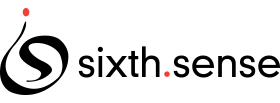
The Myth of Multitasking: Why Single-Tasking Is the Key to True Productivity
In today’s fast-paced world, multitasking has become a celebrated skill. We often pride ourselves on juggling multiple tasks simultaneously, believing it makes us more efficient and productive. However, research suggests that multitasking is a myth and a significant barrier to true productivity. The reality is that the human brain is not wired to handle multiple complex tasks simultaneously, and trying to do so can lead to decreased efficiency, increased stress, and lower quality of work.
The Cognitive Limits of Multitasking
Multitasking creates an illusion of efficiency. The term “multitasking” is misleading, suggesting we can perform multiple tasks simultaneously. However, we’re actually just quickly “task switching,” which involves rapidly shifting our focus from one task to another. Each switch requires our brains to reorient and refocus, which consumes cognitive energy and time. Studies have shown that switching tasks can reduce productivity by up to 40% as our brains struggle to regain concentration and momentum.
The Cost of Divided Attention
When we divide our attention, the quality of our work often suffers. Multitasking can lead to more mistakes, as our brains are not fully engaged with one task. This can be particularly detrimental in tasks requiring critical thinking or creativity, where deep focus is essential. Furthermore, the constant interruption of task-switching can lead to cognitive overload, increasing stress levels and diminishing our ability to retain information.
The Benefits of Single-Tasking
Single-tasking, or focusing on one task at a time, allows for deeper engagement and higher-quality work. By dedicating our full attention to one task, we can complete it more efficiently and effectively. This approach also fosters a state of “flow,” where we become fully immersed in an activity, leading to heightened creativity and satisfaction. Additionally, single-tasking helps reduce stress, as it minimises the cognitive load and allows us to manage our time more effectively.
Implementing Single-Tasking in Your Routine
To embrace single-tasking, prioritise your tasks and focus on the most important ones first. Use time-blocking techniques to allocate specific periods for each task and minimise distractions by creating a conducive work environment. (switch all those pesky notifications OFF!) It’s also crucial to set clear boundaries, such as designated times for checking emails or social media, to prevent these activities from interrupting your workflow.
By consciously prioritising single-tasking, we can reclaim our attention, enhance our productivity, and ultimately deliver higher-quality results in our professional and personal lives – without getting mentally frazzled in the process! What’s not to like with all of that?

Start The Discussion